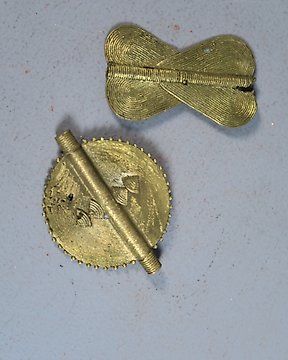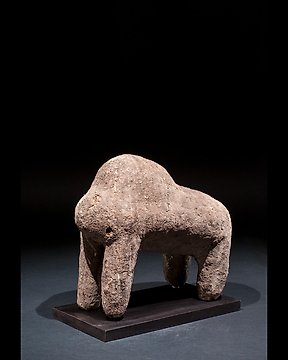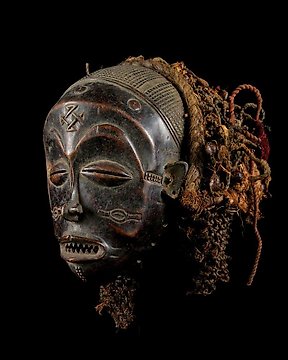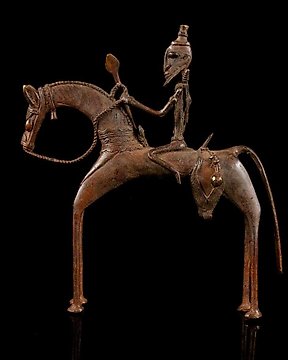Senufo - Mali
Nr. 83439869

Senufo - Mali
Nr. 83439869

Senufo - Mali
A female Senufo Rhythm pounder - called Débéle - Mali, Sikasso region,, uprising from a cylindrical, oval, base with straight, shortened legs, the openwork arms carved beside a slender body with a small pointed navel, the hips are covered with cowrie shells, wide shoulders, the columnar neck supporting a zoomorphic head with a protruding lower jaw, wearing a domed, single crested coiffure, scarification patterns at the body and around the navel; aged patina, the neck, the arms and the base of the statue with significant signs of a touch patina, the sculpture is still in the original condition like it was collected in situ. Normally these traces of use are washed off as soon as these objects arrive on the Western market.
Lit.: A lecture of Dr. Junker, "der Originalzustand.. Wo ist er geblieben?" Gottschalk Burkhard, "Senufo, Massa und die Statuen des poro" 2002: 43; Glaze Anita J., "Art and Death in a Senufo Village", Indiana University Press, Bloomington 1981. A related eyemplare: Robert Goldwater, Senufo Sculpture from West Africa, New York, 1964, ills. 88 and 88a, Werner Gillon, Collecting African Art, London, 1979, p. 50, fig. 38 William Rubin, "Primitivism" in 20th Century Art: Affinity of the Tribal and the Modern, New York, 1984, vol. 1, p. 131 William Rubin, Le Primitivisme dans l’art du 20e siècle. Les artistes modernes devant l’art tribal, Paris, 1987, p. 131 Jacques Kerchache, Jean-Louis Paudrat and Lucien Stéphan, L'art africain, Paris, 1988, p. 82, pl. 34, Jacques Kerchache, Jean-Louis Paudrat, and Lucien Stéphan (eds.), Die Kunst des Schwarzen Afrika, Freiburg, 1989, p. 80, pl. 34 Jacques Kerchache, Jean-Louis Paudrat and Lucien Stéphan, Art of Africa, New York, 1993, p. 82, pl. 34 Mary H. Nooter, Secrecy: African Art that Conceals and Reveals, New York, 1993, p. 155, cat. 79.
According to Gottschalk, who tried to make a typolgy of the Senufo Déblé, these exemplares would probably be submitted to the group of the kulibèlè and not the fonombèlè.
"While the former (fonombèlè), either because of a lack of ability for finer work (the fonombèlè are the blacksmiths in the Senufo society) or as a consciously used stylistic device, left the clear and powerful forms, the contrasting horizontals and verticals, largely as they were when they were defined of the proportions, the kulibèlè (the traditional carvers) tried to ensure that the body parts flowed smoothly into one another, as long as they did not incorporate the style of their older brothers into their work or more or less copy it." Source: Burkhard Gottschalk
More realistic sounds the opinion of Glaze, who described the difficulties of a stylistic typology according to both ethnic groups after she did fieldwork around kufulo (region of Dikodougou). Anita J. Glaze, 81.
Misschien vind je dit ook interessant
Dit object was te vinden in
Zo koop je op Catawiki
1. Ontdek iets bijzonders
2. Plaats het hoogste bod
3. Veilig betalen






